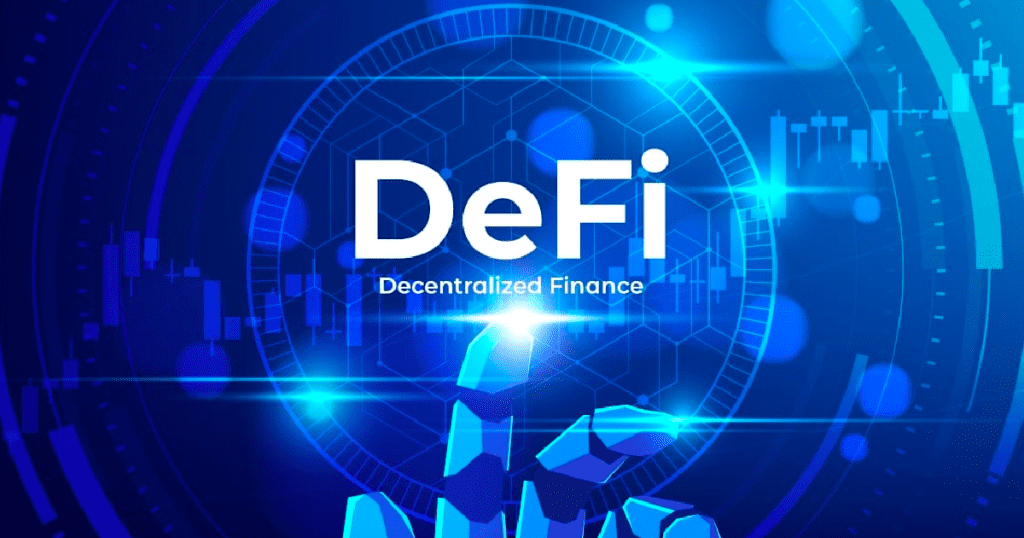7 Essential Mobile App Development Features to Drive DeFi Adoption Successfully
Decentralized Finance (DeFi) has gained immense popularity in recent years as a new form of financial services built on blockchain technology. DeFi apps are designed to run on a decentralized network, allowing users to access a range of services without the need for intermediaries such as banks or financial institutions. These apps give users full control over their assets, allowing them to perform a variety of transactions, including lending, borrowing, trading, and more. As the demand for DeFi continues to rise, the need for an app development company in USA also increases, helping users drive DeFi adoption successfully. In this blog, we will discuss some must-have features for a successful DeFi app development. Must-Have Features of A Successful DeFi Application Building a successful DeFi app…
Decentralized Finance (DeFi) has gained immense popularity in recent years as a new form of financial services built on blockchain technology. DeFi apps are designed to run on a decentralized network, allowing users to access a range of services without the need for intermediaries such as banks or financial institutions. These apps give users full control over their assets, allowing them to perform a variety of transactions, including lending, borrowing, trading, and more.

As the demand for DeFi continues to rise, the need for an app development company in USA also increases, helping users drive DeFi adoption successfully.
In this blog, we will discuss some must-have features for a successful DeFi app development.
Must-Have Features of A Successful DeFi Application
Building a successful DeFi app is a challenging process that requires careful planning and consideration of various features. From choosing the right technologies to the efficient execution, careful testing, and quality assurance of various milestones on a project roadmap, every stage of the process requires methodological consideration.
In straight terms, a successful DeFi project should have a robust roadmap with clearly defined features and attainable milestones. Here’s a list of some essential features to drive DeFi adoption successfully.
1. Smart Contract Integration
Smart contract integration is a crucial feature for any DeFi app. Smart contracts are self-executing contracts with the terms of the agreement directly written into code. Smart contracts eliminate the need for intermediaries, providing users with transparent, secure, and tamper-proof transactions. Smart contract integration ensures the integrity of the transactions and reduces the risk of fraud or hacking.
2. Decentralized Exchange Integration:
A successful dApp blockchain application development is incomplete without DEX. Decentralized exchanges (DEXs) are an integral part of the DeFi ecosystem, allowing users to trade cryptocurrencies without intermediaries. DEXs offer a transparent and secure trading environment, enabling users to control their assets completely. Integrating a DEX into a DeFi app provides users with a seamless trading experience, allowing them to trade assets in real time.
3. Interoperability
Another significant feature of a successful DeFi app is Interoperability. DeFi apps should be able to integrate with other blockchain networks and DeFi protocols, enabling users to interact with multiple platforms seamlessly. Interoperability offers users more options and a broader range of services, resulting in increased adoption and usage of the DeFi app.
4. Security
DeFi apps handle large amounts of digital assets and personal information, making them a prime target for hackers and bad actors. A successful DeFi app should have robust security features, including multi-factor authentication, encryption, and key management protocols. Regular security audits and code reviews should be conducted to identify and fix any vulnerabilities.
5. User Interface
DeFi apps should have an intuitive and user-friendly interface that enables users to access and use the app’s features easily. A clear and straightforward design that presents essential information in an organized and understandable format is crucial to ensure that users can navigate the app effectively. The user interface should also be aesthetically pleasing, providing users with an enjoyable and engaging experience.
6. Liquidity
Liquidity is the lifeblood of any financial system, and DeFi apps are no exception. DeFi apps need to have sufficient liquidity to enable users to buy, sell, and exchange assets without incurring significant price slippage or transaction costs. Liquidity can be provided by liquidity providers or market makers.
7. Transparency
For a successful DeFi app adoption, your application must embrace the value of transparency. It means the DeFi app should allow users to view and track their transactions, including fees, interest rates, and collateral, in real time. A successful DeFi app should provide users with complete transparency, enabling them to monitor their assets and transactions with ease.
8. Scalability
A successful DeFi app should be built with scalability in mind, ensuring it can handle increasing volumes of transactions without slowing down or crashing. As the number of dApp users and transactions increases, the app should be able to handle the load without sacrificing performance.
9. Regulatory Compliance
As the DeFi industry continues to grow, regulators are becoming increasingly interested in regulating DeFi apps. A successful DeFi app should be designed with regulatory compliance in mind, ensuring that it complies with relevant laws and regulations to avoid legal issues in the future.
Looking Forward to Building a DeFi App?
A successful DeFi app must incorporate the features of decentralized exchange integration, smart contract, interoperability, security, user interface, transparency, and scalability. Combining these features into dApp blockchain application development will provide users with a seamless and secure DeFi experience, enabling them to perform a variety of financial transactions with ease.
By incorporating these essential features, DeFi apps can drive greater adoption, promote financial inclusivity, and transform the traditional financial services industry.